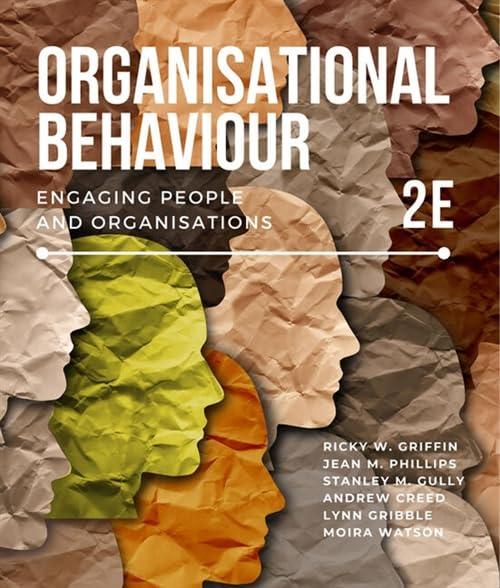Communication is often seen as a type of engineering problem concerned with ensuring that the senders message
Question:
Communication is often seen as a type of engineering problem concerned with ensuring that the sender’s message is adequately received by the receiver and not interfered with by such things as noise or channel interference. Considering communication from this type of conduit model means the process is often presented as a fairly easy and unproblematic activity that requires minimal effort. However, the conduit model perspective does not take into account communication issues such as the inherent potential for ambiguity in all messages, the unintentional meaning interpreted by the receiver, how receivers create meaning from any message, and the need for some redundancy in a message to ensure adequate comprehension.22 Perceiving communication as a simple process often means that it is not considered as a reason for problems in the organisation. Even when communication is identified as the cause of an issue, organisational members often apply simplistic solutions to what are in fact complex problems.23 From a critical perspective, communication involves more than conduit considerations of how the process operates, and instead considers how communication actually constructs the organisation and what role power plays in the construction of the reality. Rather than seeing communication as a process that occurs within the organisation, the critical focus is on the way organisational members create and shape the organisation through communication and how powerful people use communication to achieve their own ends. Many organisations are structured on rational-legal principles24 and operate as bureaucracies designed to control people’s decision making and behaviour through logical and impersonal rules in hierarchies governed by planning, calculating and efficiency. This rationalisation sees organisations looking to increase accountability and organisational efficiency and those in power using communication to order the hierarchies in particular ways. Any social context can be subject to rational calculations. The shift from the local corner shop to department stores in large malls, the closure of rural banks on the basis of rural Australia being over-branched, the reorientation of personallyknown doctors in single practices to interchangeable members of large medical chains, and the adoption by universities of quantitative assessments of classroom performance by students more interested in grades than learning, are all examples of organisations engaged in rationalisation processes. Increasingly, work plays a larger role in people’s lives as organisations become the dominant institutions in today’s society. Employees are expected to identify with their organisation in preference to other parts of their lives such as leisure, community and family. This corporate colonisation25 consumes people’s lives and shapes their identity. Organisations expend large amounts of money and time communicating corporate goals in an attempt to co-opt the values, beliefs and emotions of employees. Communication involves more than the process. How we think about communication influences how we act and communicate with others. Communication practices in organisations are created by the organisational members who create, sustain or resist particular power relations.
Reflection question
In what ways does this critical perspective adjust your thinking about the process of communication and its role in organisations?
Step by Step Answer:

Organisational Behaviour Engaging People And Organisations
ISBN: 272389
2nd Edition
Authors: Ricky W. Griffin, Jean M. Phillips, Stanley M. Gully, Andrew Creed, Lynn Gribble, Moira Watson





